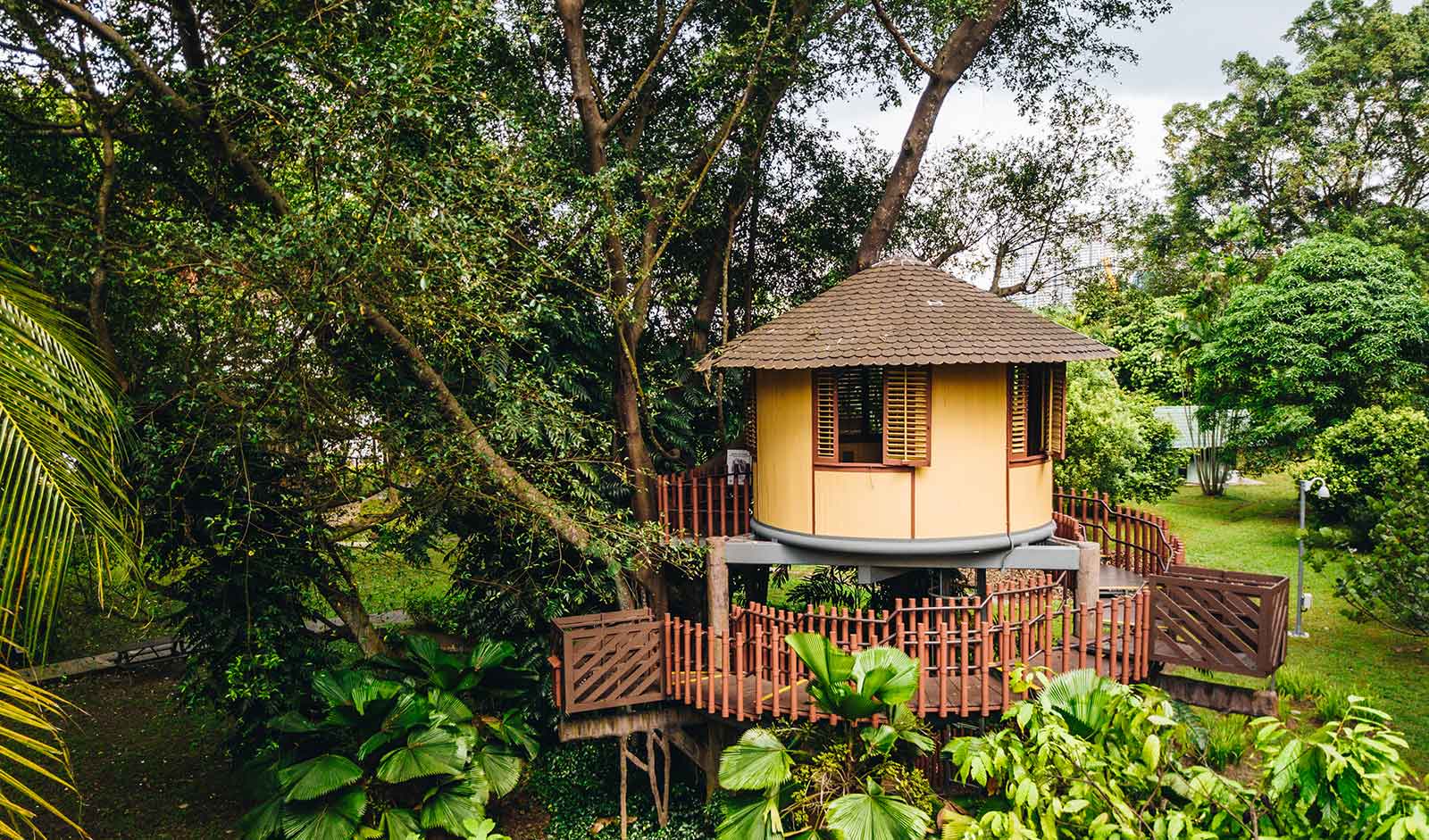Healing Plants for Natural Wellness
The Ecogarden features many plants for their healing properties from the traditional Chinese medicine perspective. Some of these plants are also used by Malays and Indians in their traditional herbal medicine practices. Our ancestors discovered healing properties in many natural sources and harvested them like food with practicality in mind to achieve good health. Generations of mothers have also used these ideas and always took a more natural approach to keep their families well by using healing plants as ingredients in their daily cooking.
As a provider of high-quality natural herbs and medicine since 1879, Eu Yan Sang is proud to bring you the knowledge of healing plants through the Ecogarden.
We hope that you will be inspired by this to start using healing plants or their extracts in your daily life and share this practice with your friends and family.
Disclaimer
All information displayed has been gathered from reliable sources and is not a substitute for medical treatment. Visitors are advised to always consult a physician before consuming or applying a plant for medicinal purposes.
-
ALOE
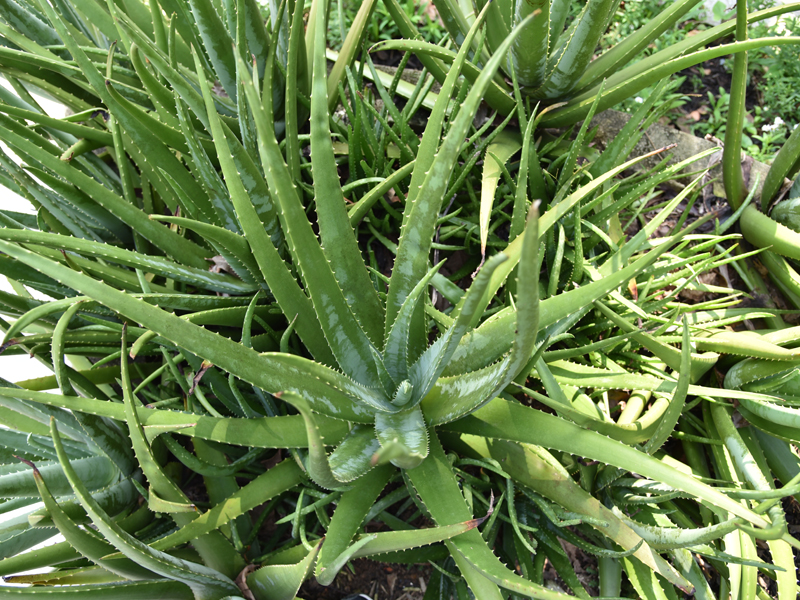
Scientific Name: Aloe vera.
Common Name: Aloe, Barbados Aloe, Lily of the Desert.
Family: Asphodelaceae.
Habitat: The plant grows wild in tropical and semi-tropical areas.
Leaves: Fleshy, triangular and are arranged in a rosette.
Flowers: Yellow, tubular and are arranged in a spike inflorescence.
Propagation: Suckers.Did you know?
It is a succulent plant. It is used in the food and beverage industry as well as in herbal and cosmetic applications. Because its appearance is so similar to that of cacti, many are surprised to find out that it is actually a member of the Liliaceae family, which includes lilies and onions!
Healing Properties
The clear gel contained in the leaves is commonly used to promote the healing of wounds, burns and pimples. In traditional Chinese medicine, it is also used to reduce liver heat and alleviate malnutrition in children. The bitter yellow juice from the base of the leaves is dried and used as a laxative.
-
ARECA-NUT
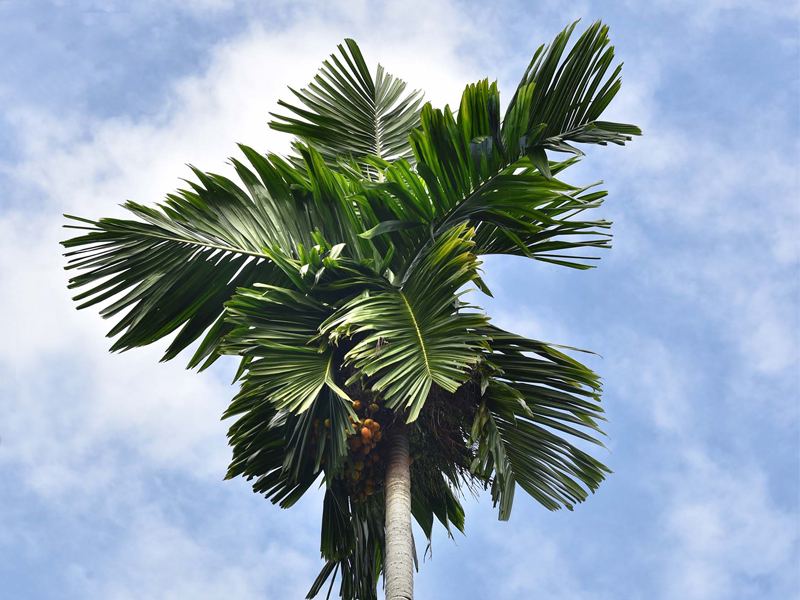
Scientific Name: Areca catechu.
Common Name: Areca- nut, Betel-nut, Pinang, Betel Palm.
Family: Palmae.
Habitat: This is a native palm commonly planted in rural areas for nuts.
Leaves: Fleshy, triangular and are arranged in a rosette.
Trunk: The trunk is pencil-shaped, smooth, grey, distinctively ringed.
Flowers: Small, pale yellow and inconspicuous, developing into oval green fruits which turn orange with maturity.
Propagation: Seeds.Did you know?
After the old leaves have died and fallen, the leaf bases are gathered from the ground and turned into bio-degradable products.
Healing Properties
This plant has attractive yellowish-red conical shaped fruits with a flattened base. Internally, they are mottled like a nutmeg. The ripe seeds are used to treat diarrhoea and aid digestion. In certain cultures, the seed is wrapped around the leaf of the Piper betel and chewed to strengthen the gums. In traditional Chinese medicine, it is used to expel tapeworms and roundworms. Half-ripe seeds are pounded and used as an ointment for skin diseases.
-
CHILLI
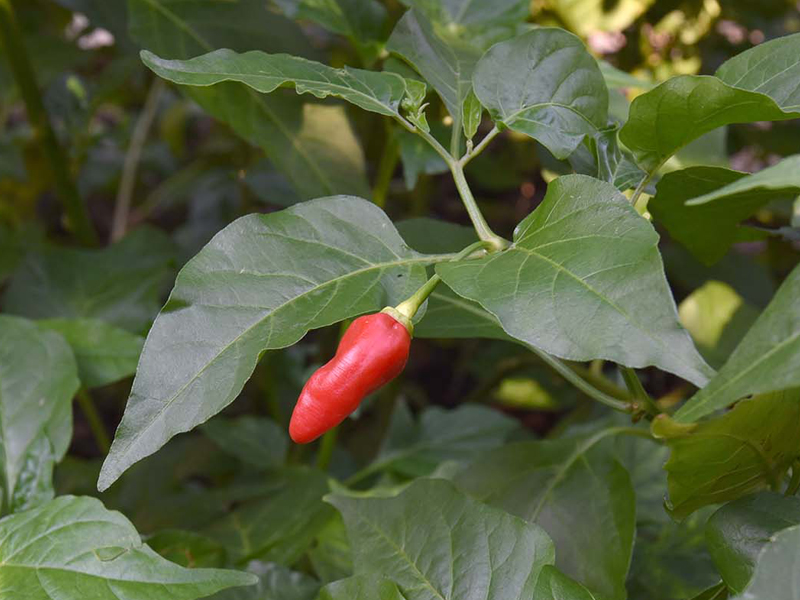
Scientific name: Capsicum annum.
Common name: Chilli, Pepper, Cayenne.
Family: Solanaceae.
Habitat: Warm and sunny.
Leaves: Small, simple and oval.
Flowers: White.
Fruits: Elongated structures, green turning red when ripe.
Propagation: Seeds.Did you know?
The part of the chilli closest to the fruit stalk is usually spiciest because it has the highest concentration of capsaicin.
Healing Properties
This herb of tropical American origin is grown mainly for its fruits, which are used as a spice. They vary greatly in size and shape from long and narrow to stout and spherical. Used to stimulate gastric activity and increase blood circulation, they are also considered stimulants and carminatives - to expel gas from the stomach and intestines. The leaves are used to treat toothache.
-
CHINESE JUNIPER
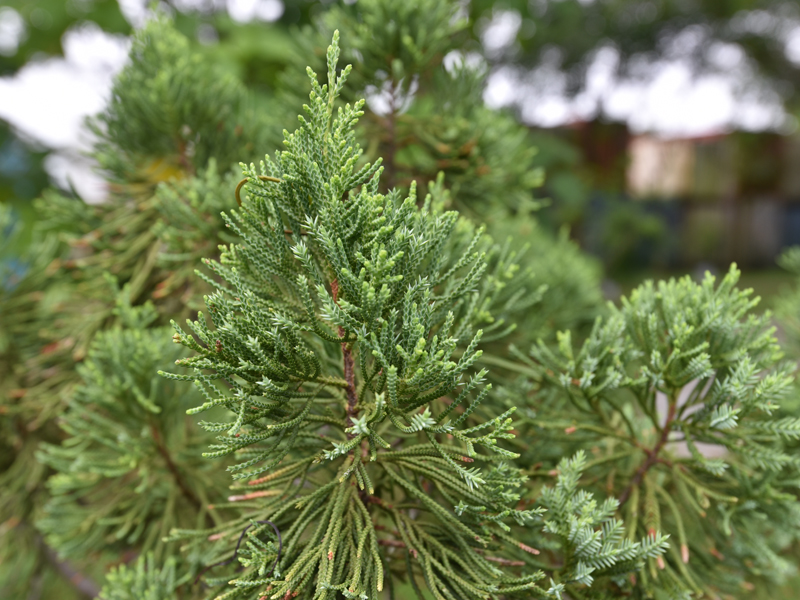
Scientific name: Juniperus Chinensis.
Common name: Chinese Juniper.
Family: Cupressaceae.
Habitat: Terrestrial. It does well under full sunlight with moderate water.
Leaves: Green, needle-like, juvenile foliage is narrow, awl-shaped, in pairs or in three. Adult leaves are scale-like, four in numbers.
Flowers: Solitary, terminal.
Reproductive parts: Pollen cones are yellow. Seed cones are on short stalks.
Propagation: Stem cutting.Did you know?
The Chinese Juniper is a non-flowering seed plant (conifer). The leaves are used in making liquor.
Healing Properties
A liquor is brewed from fresh leaves and used as a tonic to treat bleeding resulting from coughs. The plant is also an effective diuretic.
-
DRAGON TAIL
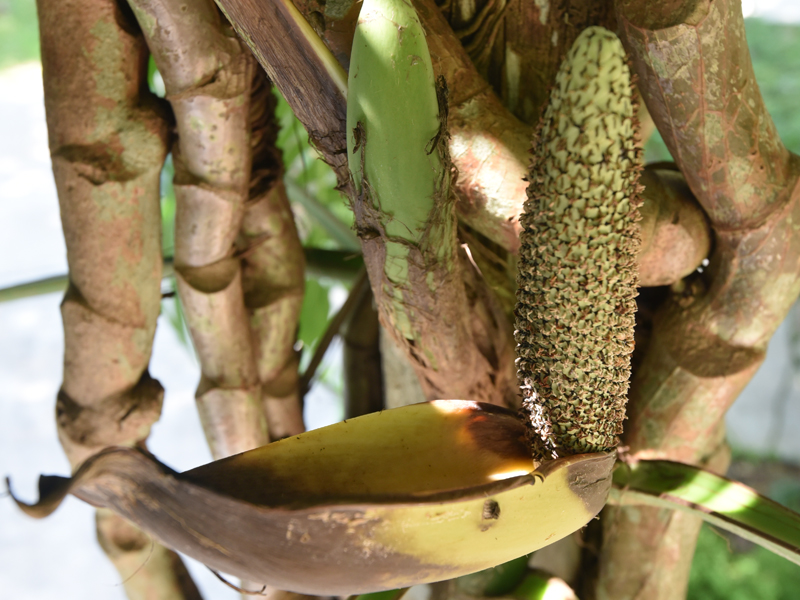
Scientific name: Epipremnum pinnatum.
Common name: Dragon Tail, Golden Pothos, Taro Vine.
Family: Araceae.
Habitat: Primary rainforest.
Leaves: Leaf morphology changes with the age of a plant. Juvenile plants terrestrial creepers. The plant produces mature leaves only when there is sufficient height. Young leaves are elliptical to arrow-shaped with an entire margin. Mature leaves are 30 to 50cm long, thick and leathery.
Flowers: Small on spathe-spadix inflorescence.
Fruits: Aggregate berries clustered on the medium green spadix, red when ripe.
Propagation: Stem cutting, Stolon/Runner.Did you know?
This plant has two types of leaves.
Healing Properties
This plant is used to treat traumatic injuries, abscesses, fractures and rheumatic conditions. In Singapore, the leaves are reputedly used as an effective anticancer agent. For this, a decoction of leaves is prepared by boiling a fresh mature leaf with rock sugar and taken daily. In Java, the leaves and young stems are applied to cure wounds, burns and boils.
-
GOLDEN SHOWER TREE
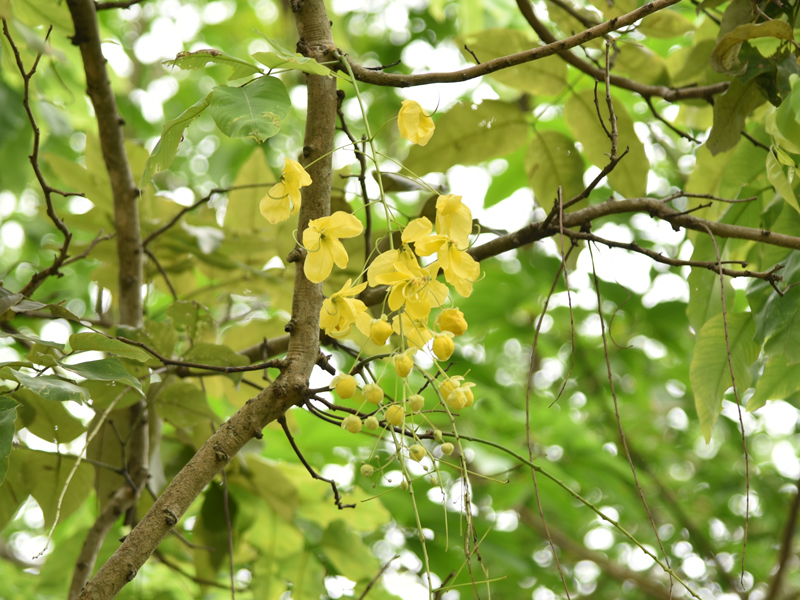
Scientific name: Cassia fistula.
Common name: Golden Shower, Indian Laburnum.
Family: Fabaceae.
Habitat: Wayside tree from tropical Asia.
Leaves: Leaves are pinnately compound, consisting of 3-8 pairs of opposite leaflets.
Flowers: Bright yellow, fragrant, produced in long clusters.
Fruits: Long cylindrical pods.
Propagation: Seeds, Marcotting.Did you know?
Its timber is used for making cabinets, buildings, wooden pounding mortars and agricultural implements. The bark is used for tanning and dyeing. A water-soluble gum extracted from the seeds has good binding properties and shows promise in use for the pharmaceutical industry.
Healing Properties
In many Asian countries, the raw, black pulp found between the seeds, is used as a popular remedy for constipation. In Ayurvedic treatments, it is used for ringworm, fever, boils and eczema. It is also used as a treatment for diabetes. In large doses, the leaves and bark can cause vomiting, nausea, abdominal pain and cramps.
-
LIFE PLANT
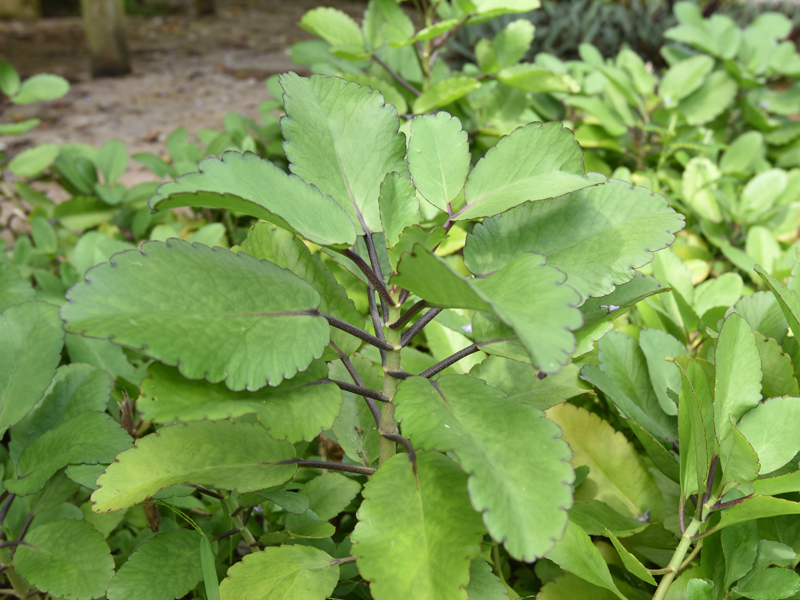
Scientific name: Kalanchoe pinnata.
Common name: Life Plant, Leaf Plant, Air Plant, Good Luck Leaf.
Family: Crassulaceae.
Habitat: Plant is a herb of pantropic distribution.
Leaves: Leaves are simple with a waxy margin.
Propagation: Plants are propagated by leaves.Did you know?
You can grow new plants along the margin of the leaves by placing the leaves between the pages of a newspaper or a book or when left on the ground.
Healing Properties
Native to tropical Africa, the leaves are popular with children who love to place them between the pages of a book until the young shoots sprout and produce roots. In Malaysia, the juice is expressed and mixed with honey to treat tonsillitis, earache and inflammation. In traditional Chinese medicine, the leaves are used to treat boils, wounds, burns, scalds and headaches. In India, the bark is used to stop diarrhoea and vomiting.
-
OYSTER PLANT
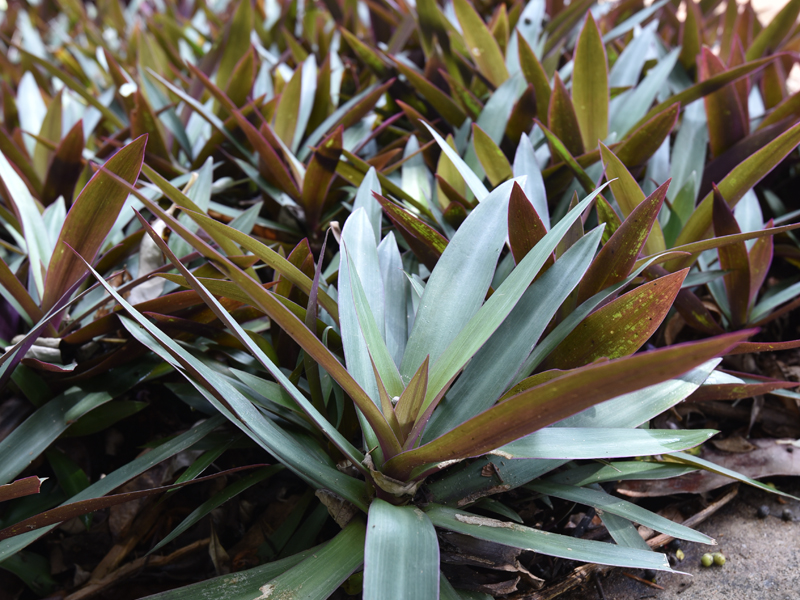
Scientific name: Tradescantia spathacea or Tradescantia discolor.
Common name: Oyster Plant, Boat Lily, Moses-in-the-cradle.
Family: Commelinaceae.
Habitat: Tropical climate.
Leaves: Long and sword-shaped, dark teal green on top, vivid purple on underside, waxy and fleshy.
Flowers: Small, white, nestled in purple boat-shaped bracts, produced whole year round at leaf axils.
Fruits: Capsule with two seeds.
Propagation: Seed, Sucker, Stem cuttings.Did you know?
The plant has a faint oyster-like fragrance, hence its name oyster plant.
Healing Properties
The flowers of this plant are used in traditional Chinese medicine to treat intestinal bleeding, blood in the sputum and dysentery. It is also considered poisonous as the watery sap can cause contact dermatitis and digestive problems if consumed in large quantities. It is also cultivated for the swollen fleshy rootstock that when cooked is said to have the flavour of oysters.
-
PICK-A-BACK
Scientific name: Phyllanthus uniruria.
Common name: Pick-a-back, Dukong Anak.
Family: Euphorbiaceae.
Habitat: This plant is common in waste grounds and as a weed in gardens.
Leaves: Small narrowly oblong.
Flowers: Small with white sepals.
Fruits: Capsules that are round and smooth.
Propagation: Seeds.Did you know?
The flowers do not have any petals.
Healing Properties
In traditional Malay medicine, it is used to increase menstrual flow, reduce fever and cure excessive crying in babies. In China and Suriname, traditional healers use this plant to treat jaundice and Hepatitis B. It is also prescribed for toothache, muscle spasms and gonorrhoea. The Dusun and Kadazan tribes of Malaysia use it to treat malaria. It can be commonly seen growing in an open abandoned land and by the roadside.
-
PINEAPPLE
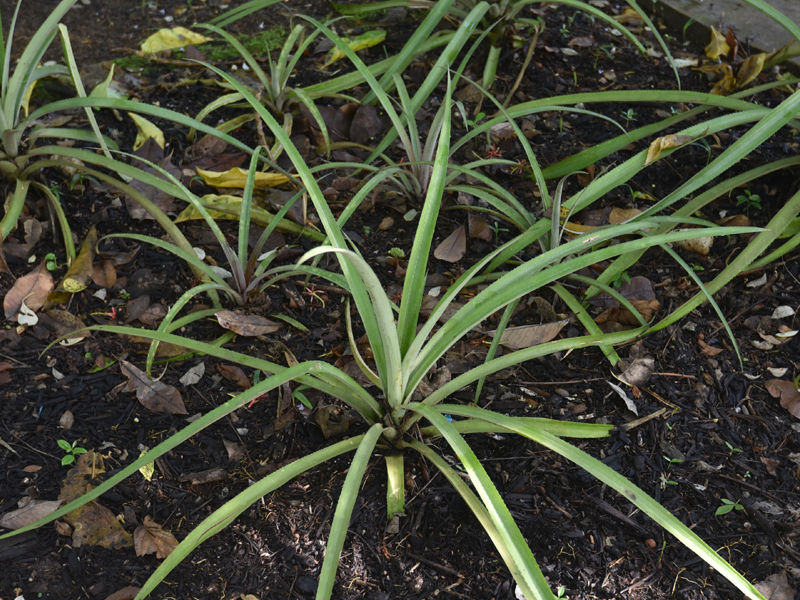
Scientific name: Ananas comosus.
Common name: Pineapple, Nanas.
Family: Bromeliaceae.
Habitat: Tropical climate.
Leaves: Long, grow from the base of the plant in a rosette and have sharp edges.
Flowers: Small, regular, violet coloured, bisexual and are attached to a fleshy central axis.
Fruit: Developed by an enlargement of the fleshy axis and the fusion of 100 or more ovaries into an aggregate fruit. Ripe fruit is 10-15cm in diameter.
Propagation: Suckers.Did you know?
Pineapples contain the bromelain enzyme which can break down proteins, so you can use them to tenderise meat.
Healing Properties
Native to tropical America, the fruit is used in Indonesia, to promote digestion and to soothe sore throats. The Vietnamese use ripe fruit to expel impurities and stones from the kidneys promotes urine flow and treat gonorrhoea. In Malaysia, the juice from the unripe fruit is used as a purgative. In the Philippines, the liquid obtained by soaking the leaves in water is used to aid difficult childbirth.
-
SUGARCANE
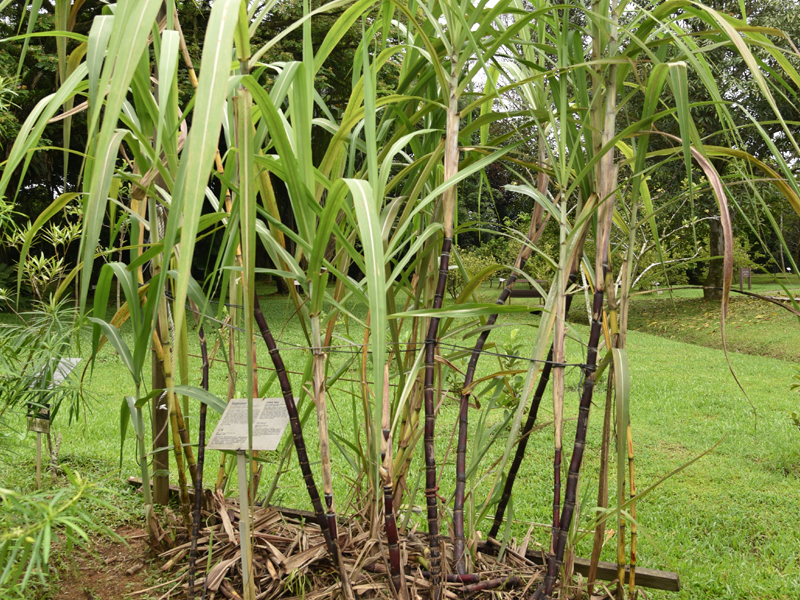
Scientific name: Saccharum officinarium.
Common name: Sugarcane.
Family: Poaceae.
Habitat: Subtropical and tropical areas.
The plant belongs to the grass family, an economically important flowering plant. The plant produces a number of stems (stalks) that reach 3 to 7 metres.
Leaves: The leaves grow alternately on opposite sides of the stem. They are long, sword-shaped up to 1.5 metres long and 5-7 cm wide, with a prominent midrib and groove on the upper surface.
Flowers: The tiny flowers are clustered as a loose inflorescence or tassel and are also referred to as the ‘arrow’.
Propagation: Stem cuttings.Did you know?
The sugar concentration is highest just before the plant flowers, so this is when harvesting occurs. Over 80% of the world’s sugar comes from sugarcane.
Healing Properties
In traditional Chinese medicine, the juice from the cane is taken to promote the expulsion of phlegm from the respiratory passages and to stimulate gastric activities. It is also used in the treatment of boils, ulcers and wounds. In Indochina, a decoction of the stem is used to treat smallpox, abdominal and kidney complaints, nausea and vomiting. The sugarcane plant is native to tropical Southeast Asia.
-
TAPIOCA
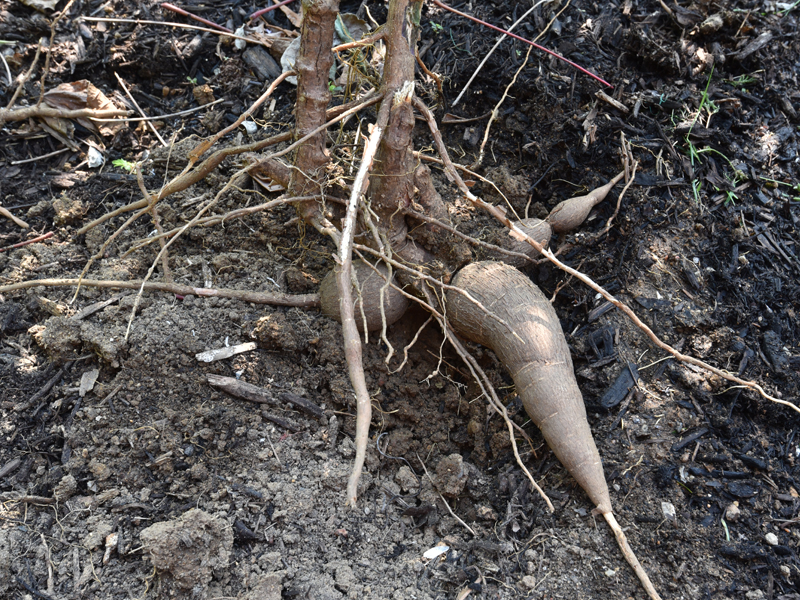
Scientific name: Manihot esculenta.
Common name: Tapioca, Ubi Kayu, Cassava.
Family: Euphorbiaceae.
Habitat: Tropical climate.
Leaves: Large, dark green, palm-shaped leaves with 5-9 lobes on long red leafstalks.
Flowers: Inconspicuous flowers in a bunch (inflorescence).
Propagation: The plants are propagated by stem cuttings.Did you know?
Tapioca pearls are made from tapioca starch, and the starch is derived from the swollen roots of the plant.
Healing Properties
The starchy roots of this plant are used to dress ulcerous sores in Indochina. In China, a poultice mixed with ginger is used to draw out pus at infected areas. The bark is used to treat rheumatism in the Philippines. In traditional Chinese medicine, it is used to remove toxicity and reduce swelling. The roots are also a food source; recent estimates suggest that it provides 8% or more of the minimum calorie requirement for more than 750 million people.
-
TOUCH-ME-NOT
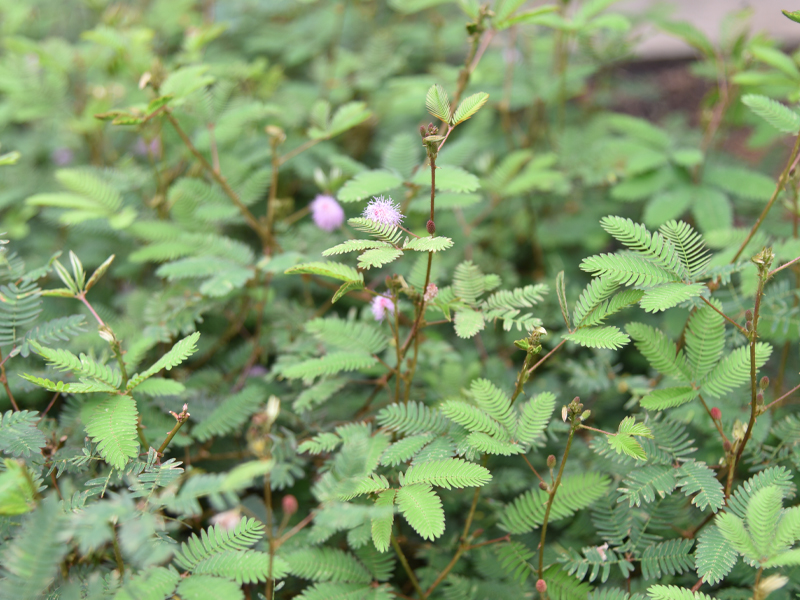
Scientific name: Mimosa pudica.
Common name: Touch-me-not, Sensitive Plant, Putri Malu.
Family: Bean Family (Leguminosae).
Habitat: Common in grassy places, roadsides, and waste grounds.
Leaves: Compound with 3 leaflets. Each leaflet is narrower in proportion to its length. When touched, it rapidly folds its leaflets together and the whole leaf droops down.
Flowers: Pinkish and small. Each flower has many stamens.
Fruits: 1.5 – 2.5cm long with 3-5 joints. Each joint has one seed. The flat pods have bristles along their edges.
Propagation: Seeds.Did you know?
The hairs lining the leaves of this sensitive plant are highly responsive to touch, temperature, and motion, folding inwards when triggered. The response to stimulation is a part of the sensitive plant’s natural defence mechanism.
Healing Properties
In traditional Chinese medicine, it is used to clear heat and relieve cough. In Malaysia and Indonesia, parents often bathe their children in a decoction of the plant or place a small branch under their pillow when there is difficulty in sleeping. In the Philippines, the leaves are soaked in coconut oil and used to treat wounds and ulcers. The roots are used to promote urination and stop dysentery. In India, the roots are used to treat asthma, jaundice, leprosy and smallpox.
-
VENUS HAIR FERN

Scientific name: Adiantum capillus-veneris.
Common name: Venus Hair Fern, Maidenhair Fern, Lady Fern, Five Finger Fern.
Family: Pteridaceae.
Habitat: Prefers to grow in shady places.
The Venus Hair Fern is generally green with a black or dark brown stem. Ferns have soft textures and a lacy appearance.
Propagation: Spores and rhizomes.Did you know?
Ferns are used as an ornamental plant, both indoors and outdoors and are often grown in pots, terrariums and hanging baskets.
Healing Properties
It is used by Western herbalists to treat coughs, bronchitis and sore throat. It is also used as a remedy for conditions of the hair and scalp. The leaves are used in traditional Chinese medicine to treat snakebites, expel intestinal worms, induce vomiting and control fever. This fern grows well in moist shady sites and can reach 30cm in length.
-
WHITE PEPPER
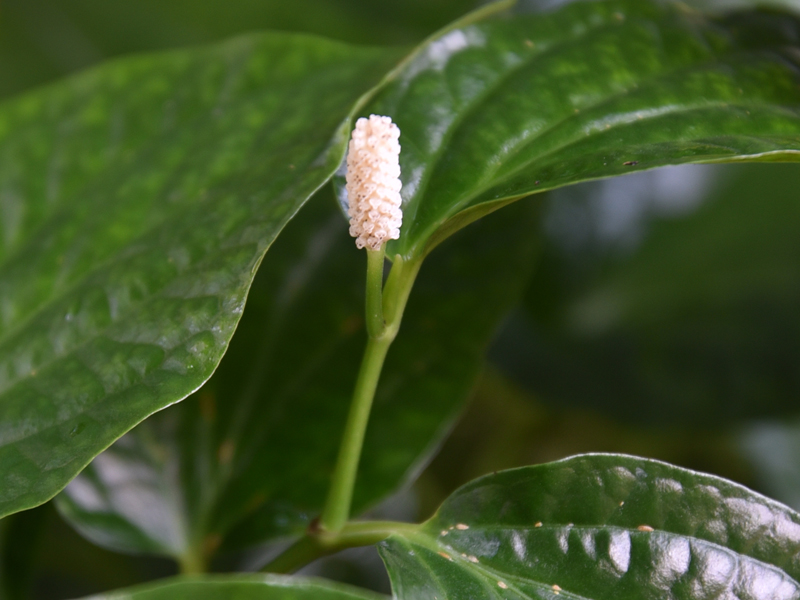
Scientific name: Piper sarmentosum.
Common name: White Pepper, Daun Kaduk, Sirih Duduk.
Family: Pepper Family (Piperaceae).
Habitat: Evergreen erect herb commonly cultivated in a shaded or semi-shaded area.
Leaves: Thin dark green, heart-shaped and like other Piper species, a distinct venation radiating from the leaf base.
Flowers: Flowers are white and found in short spikes.
Fruits: Small, round and crowded together. The fruits (berries) turn black when ripe.
Propagation: Stem cuttings.Did you know?
The shoots and young leaves are dipped in sambal and eaten raw (known as ulam). The leaves are often used as a base to line platters, with foods arranged on top.
Healing Properties
This plant is used in traditional Malay medicine to treat coughs, flu, toothache and rheumatism. The roots are boiled in water and taken as a diuretic. A decoction of the leaves is used to treat malaria. In traditional Chinese medicine, besides being taken to aid digestion, it dispels cold and eliminates phlegm. It is also grown as a vegetable and does well on damp soil. The plant has a characteristic pungent odour and swollen joints.
Supported by
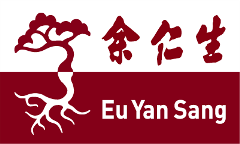




.jpg)
d1-01.jpg)

